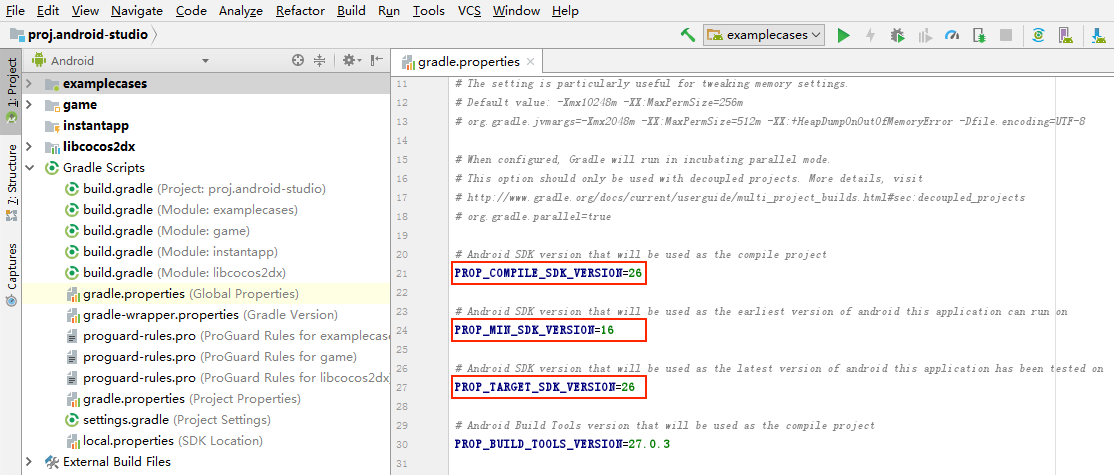FAQ
on the MAC platform after the installation of Creator, open the project, the window can not be displayed
Drag the CocosCreator.app from the DMG into the application, and then open it.
How do I configure the directory structure generated after build and automatically modify the contents of the built file
Please refer to Custom Project Build Process.
The object associated with the component cannot be found after the build, or the warning cannot find the type
The specified module may be excluded, please check the Module Config in the Main menu -> project -> Project Settings.
Load resources from CDN
Modify libraryPath and rawAssetsBase parameter in main.js to any path.
How to take a screenshot in the browser
Screenshot method: monitor cc.Director.EVENT_AFTER_DRAW event, calling cc._canvas.toDataURL() In the callback to get a screenshot of the Base64 format.
For details, please refer to 07_capture_texture in the example-cases, which shows how to take a screenshot and save on three different platforms.
When it touches a third-party Android-brought WebView, the engine has an error.
Locate the call cc.view.enableAutoFullScreen in main.js and change the incoming parameters to false.
If frame animations are different in size for each frame, an offset occurs when the animation is played
Please refer to: Sprite Animation with offset.
After picture enlarged, edge white edge/black edge problem
This is due to the color channel and background colors did the interpolation when bilinear filtering, the simpler way is to use the pre-multiply. Pre-multiplication requires that the blending mode of the Sprite component be set to SRC: ONE, DST: ONE_MINUS_SRC_ALPHA, and then process the original image.
There are two ways to deal with the original, one is to add a black background under the color channel when the picture is exported, and the transparent channel remains unchanged. The other way is to call texture.update({premultiplyAlpha: true}) to texture in code, if the call fails, it may be an older version of Creator and the old version needs to use texture.handleLoadedTexture(true).
How to control Prefab with plugins
Create Prefab:
Editor.Ipc.sendToPanel('scene', 'scene:create-prefab', node.uuid, 'db://assets/xxx/xxx.prefab');
Enter Prefab edit mode:
Editor.Ipc.sendToAll('scene:enter-prefab-edit-mode', assetUuid);
Save Prefab:
Editor.Ipc.sendToPanel('scene', 'scene:apply-prefab', node.uuid);
1.8.2 version may have a JSC crash problem
Please upgrade to the version after 1.8.2.
WeChat open data prompted wx.request can not find when loading avatar
When you load a picture, the URL is missing such as .png suffix, cc.loader.load needs to be changed to incoming { url: url, type: "png" }.
For details, please refer to the dragonBones/DragonMesh in the example-cases.
How to load dragonbones remotely from a server
var animNode = new cc.Node();
animNode.parent = cc.find('Canvas');
var dragonDisplay = animNode.addComponent(dragonBones.ArmatureDisplay);
var image = 'http://localhost:7456/res/raw-assets/eee_tex-1529064342.png';
var ske = 'http://localhost:7456/res/raw-assets/eee_ske-1529065642.json';
var atlas = 'http://localhost:7456/res/raw-assets/eee_tex-1529065642.json';
cc.loader.load(image, (error, texture) => {
cc.loader.load({ url: atlas, type: 'txt' }, (error, atlasJson) => {
cc.loader.load({ url: ske, type: 'txt' }, (error, dragonBonesJson) => {
var atlas = new dragonBones.DragonBonesAtlasAsset();
atlas.atlasJson = atlasJson;
atlas.texture = texture;
var asset = new dragonBones.DragonBonesAsset();
asset.dragonBonesJson = dragonBonesJson;
dragonDisplay.dragonAtlasAsset = atlas;
dragonDisplay.dragonAsset = asset;
dragonDisplay.armatureName = 'box_anim';
dragonDisplay.playAnimation('box_anim', 0);
});
});
});
How to load spine remotely from a server
var spineNode = new cc.Node();
var skeleton = spineNode.addComponent(sp.Skeleton);
this.node.addChild(spineNode);
var image = "http://localhost/download/spineres/1/1.png";
var ske = "http://localhost/download/spineres/1/1.json";
var atlas = "http://localhost/download/spineres/1/1.atlas";
cc.loader.load(image, (error, texture) => {
cc.loader.load({ url: atlas, type: 'txt' }, (error, atlasJson) => {
cc.loader.load({ url: ske, type: 'txt' }, (error, spineJson) => {
var asset = new sp.SkeletonData();
asset.skeletonJson = spineJson;
asset.atlasText = atlasJson;
asset.textures = [texture];
asset.textureNames = ['1.png'];
skeleton.skeletonData = asset;
});
});
});
How to customize or directly disable the uglify process that comes with the editor
After the engine is customized, open the engine/gulp/util/utils.js script, at the bottom there is a uglify function. You can modify its parameters according to the requirements. If you want to completely skip the uglify operation, you can replace the contents of the uglify section directly with:
const Es = require('event-stream');
return Es.through();
How to create an AssetDB resource in a plugin
In the main process, use Editor.assetdb.create(url, data, callback). The first argument is db://assets/xxx.png, and the second argument is the buffer read by the .png file.
How to refresh resources in AssetDB in the plugin
Editor.assetdb.refresh() provides a way to manually refresh the asset database.
Creator package APK submitted to Google Play failed, prompt API level minimum 26
The Google Play statement began in August 2018, newly submitted app must be compiled with API level 26 and above. When Android builds, the three version numbers are set as follows:
compileSdkVersionCompile version: The version of the SDK used to compile the Java code, regardless of the minimum supported version. Can be set to 26/27/28.minSdkVersionThe minimum version supported: Decide to compile the minimum supported Android version of the app. Recommended set to 16 (Correspondence Android 4.0)targetSdkVersionRelated to the behavior of the runtime. The recommended setting is consistent withcompileSdkVersion, or it can be set to 22 to avoid Request App Permissions.
